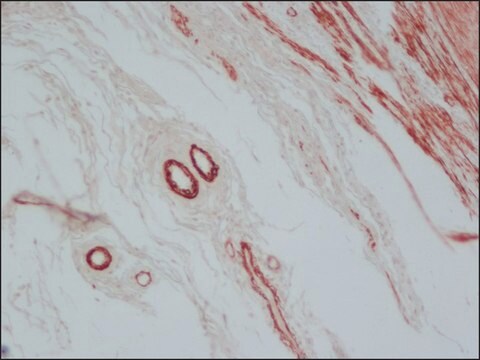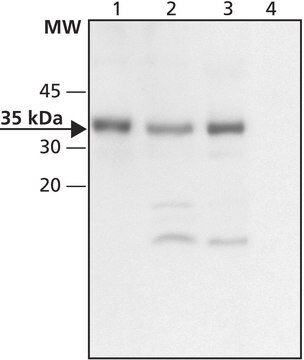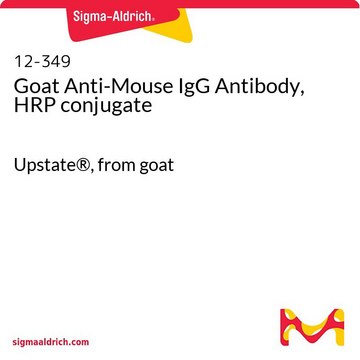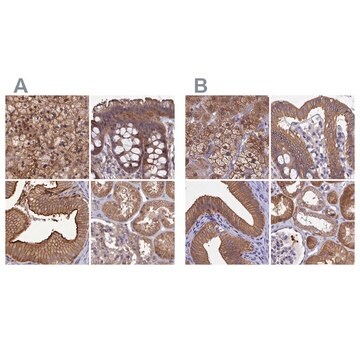S1073
Anti-STUB1/CHIP antibody, mouse monoclonal
clone ST21.55, purified from hybridoma cell culture
Synonym(e):
Anti-C terminus of HSC70-interacting protein (CHIP), Anti-HSPABP2, Anti-Heat shock protein A binding protein 2 (c-terminal), Anti-NY-CO-7, Anti-SDCCAG7, Anti-STIP1 homologous and box-containing protein 1 (STUB1), Anti-Serologically defined colon cancer antigen 7, Anti-UBOX1
About This Item
Empfohlene Produkte
Biologische Quelle
mouse
Konjugat
unconjugated
Antikörperform
purified from hybridoma cell culture
Antikörper-Produkttyp
primary antibodies
Klon
ST21.55, monoclonal
Form
buffered aqueous solution
Mol-Gew.
antigen ~35 kDa
Speziesreaktivität
rat, human, bovine
Konzentration
~1.0 mg/mL
Methode(n)
indirect ELISA: suitable
western blot: 2.5-5 μg/mL using HeLa total cell extract.
Isotyp
IgG2b
UniProt-Hinterlegungsnummer
Versandbedingung
dry ice
Lagertemp.
−20°C
Posttranslationale Modifikation Target
unmodified
Angaben zum Gen
bovine ... STUB1(504565)
human ... STUB1(10273)
mouse ... Stub1(56424)
rat ... Stub1(287155)
Allgemeine Beschreibung
Immunogen
Anwendung
Biochem./physiol. Wirkung
Physikalische Form
Haftungsausschluss
Sie haben nicht das passende Produkt gefunden?
Probieren Sie unser Produkt-Auswahlhilfe. aus.
Lagerklassenschlüssel
10 - Combustible liquids
WGK
WGK 1
Flammpunkt (°F)
Not applicable
Flammpunkt (°C)
Not applicable
Persönliche Schutzausrüstung
Eyeshields, Gloves, multi-purpose combination respirator cartridge (US)
Analysenzertifikate (COA)
Suchen Sie nach Analysenzertifikate (COA), indem Sie die Lot-/Chargennummer des Produkts eingeben. Lot- und Chargennummern sind auf dem Produktetikett hinter den Wörtern ‘Lot’ oder ‘Batch’ (Lot oder Charge) zu finden.
Besitzen Sie dieses Produkt bereits?
In der Dokumentenbibliothek finden Sie die Dokumentation zu den Produkten, die Sie kürzlich erworben haben.
Unser Team von Wissenschaftlern verfügt über Erfahrung in allen Forschungsbereichen einschließlich Life Science, Materialwissenschaften, chemischer Synthese, Chromatographie, Analytik und vielen mehr..
Setzen Sie sich mit dem technischen Dienst in Verbindung.








